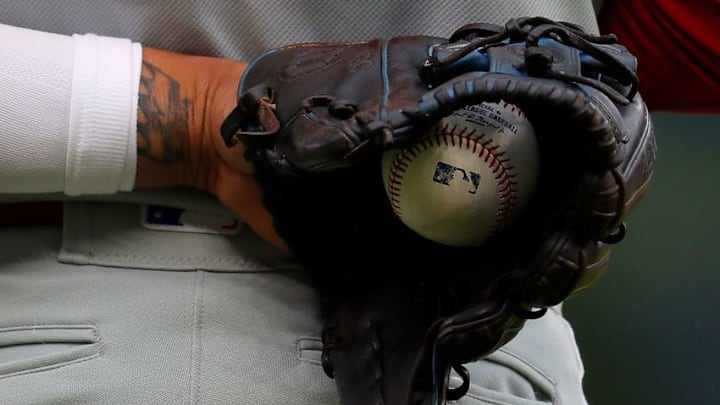The Yankees, believe it or not, have a pretty good pitching staff, starters and relievers included. But that’s only the case when they are firing on all cylinders, something that’s escaped them from time to time this season. What happens and why does it happen that a pitcher suddenly “loses it”?
The Yankees have had their share of pitching lapses and woes this season. But what’s interesting is they haven’t come from the places where you would expect there to be issues. Inexplicably, a rookie like Jordan Montgomery steps into the rotation without missing a beat while the ace of the staff, Masahiro Tanaka, gets pummeled game after game. How do you explain that?
To begin answering the question, a distinction needs to be drawn between those who differ on whether pitching is an art or science. A pitching coach will fall into the latter category believing that he can fix any problem a pitcher is having with a hammer and nail or a little tweak in the size of the nail or the depth of the board being used.
But for the player standing on the mound with 50,000 pairs of eyes and a national TV audience on him as the initiator of action in baseball, sometimes things don’t come that easy. And the one thing a pitching coach, manager, agent, spouse, or priest can’t do is get inside the head of a pitcher who is struggling.
Pitching is not a science; it’s art
Tyler Clippard is a perfect example. Short of him hiding an injury (not likely), the Yankees are giving him every opportunity to “fix himself.” Joe Girardi has put him in a variety of game situations with the hope that one day, or any day now, Clippard will regain what is only misplaced, but not lost.
Confidence and coping with failure
To be sure, in a game based on failure where hitters in the Hall of Fame get there having failed seven out of every ten times they come to bat, and a pitcher who wins fifteen of his 35 starts is deemed to have had a “good year”, the line between accepting failure as part of the game and an all-out loss in self-confidence, is narrow and mysterious.
Consider this. There are only five pitchers in the major leagues today who are giving up less than a hit or a walk per inning. This means that most pitchers have runners on base every inning. Which, in turn, means that one split second losing concentration can result in a pitch a little too fat and a two-run home run.
More from Yanks Go Yard
- Should Yankees toss short-term extension at Harrison Bader before 2023?
- Yankees chose worst possible player to ring in New Year on 2023 team calendar
- Yankees State of the Farm System Review: Josh Breaux
- Yankees make upside play, sign former Rangers top prospect outfielder
- MLB insider claims favorite emerging in Bryan Reynolds rumors (not Yankees)
Luis Severino, by the way, ranks number 12 putting him among the best in this category. Jordan Montgomery comes in at #27 and is giving up a baserunner at the rate of 1.226 times per inning pitched.
The importance of this, though, is that managers and coaches look at stressful innings as much as they look at total innings. So when Tyler Clippard comes into a game, promptly walking the first batter he faces with a wild pitch in between, he’s automatically shot himself in the foot, putting himself in a situation where it’s almost impossible for him to succeed.
Take Tanaka as another example. Here’s a pitcher who’s built his entire career on being able to throw one pitch effectively. And if you are thinking of his splitter, that’s not it. It’s strike one. And when you think back to his recent stretch of ineffectiveness, that’s the pitch he “lost.”
Now and conversely, look at Tanaka’s last three starts in which he’s been able to return to normal, and voila, he has three wins and has lowered his ERA by a full half a run.
Are you speaking a foreign language?
Ask him today what he’s doing differently, and he’s liable to give you a blank stare as though you are speaking a foreign language, which, of course, to him you are. But it’s more that we are not speaking a pitcher’s language when we ask him something like that.
Pitching is not a science; it’s art. And even the best in the game, like a Clayton Kershaw, has lost his concentration more than twenty times this season, surrendering a home run to a batter. The difference, though, between Kershaw and Clippard at the moment is that Kershaw immediately regains the mental edge he holds over hitters and doesn’t compound the problem.
There’s a tendency sometimes to look at someone like Clippard, who has eleven seasons in the majors and will soon turn 33, saying, “That’s it. They’re washed up and can’t do it anymore.” And in a few cases, perhaps with someone like Bartolo Colon, that may turn out to be true.
Next: Proving that pitching is the ultimate con game
But most times, it’s just a matter of returning to the Lost and Found Department in your favorite store to reclaim only what you’ve misplaced, not lost. And most of the time, you don’t need a phone call from the store to remind you, because you’ve already figured it out yourself.
